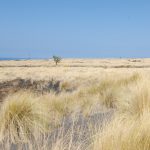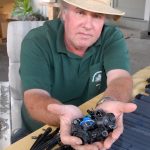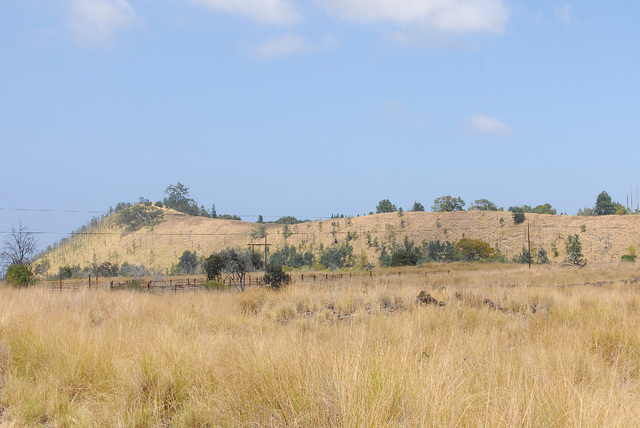KAILUA-KONA — Thirsty pigs are tearing up water lines and coffee fields are layered in dust as parts of West Hawaii look back on the driest January on record. ADVERTISING KAILUA-KONA — Thirsty pigs are tearing up water lines and
KAILUA-KONA — Thirsty pigs are tearing up water lines and coffee fields are layered in dust as parts of West Hawaii look back on the driest January on record.
Two full months with barely a drop of rain have parched the west side, and the entire Big Island had only 30 percent of normal rainfall last month — its driest start of the year since 1998. In that time, West Hawaii gauges have received a mere tenth of their normal measurements. Kealakekua and Kahua Ranch both set records for the driest January on the books, with just 0.1 inches and 0.6 inches in areas that typically get 3.6 and 7.2 inches, respectively.
The weather is not just driving the wild pigs crazy, where, on Ken Love’s fruit farm, they have torn up thousands of dollars in irrigation lines trying to quench their thirst. It has also dried out pastures, left loads of crisp fuel in wildfire-prone areas and stunted some fruit crops.
“Avocados that aren’t irrigated are half their normal size,” said Love, who has 3 acres of fruit orchards in Kealakekua and serves as the director of the Hawaii Tropical Fruit Growers.
Other growers, he said, “are seeing smaller fruit and some fruit that are aborting completely because of a lack of water.”
The Pacific is experiencing what will likely pan out to be the second strongest El Nino on record, behind only 1997-98. True to pattern, a snuffing out of the normal trade wind pattern and its accompanying showers are following the El Nino. If the past is any indication and long-term predictions hold up, there may be no relief in sight through April.
“It’s playing out like we expected,” said Kevin Kodama, a hydrologist with the National Weather Service in Honolulu. “We don’t see any big rainmakers coming.”
Instead, expect more of the same as El Nino keeps a high pressure ridge over the state, maintaining a stable pattern with light tradewinds and few showers. That pattern is possible any time in the winter, but usually lasts no more than a week.
“It usually doesn’t last five weeks,” Kodama said.
Windward areas of the Big Island are no exception to the dry, with Hilo Airport measuring 14 percent of average, at 1.3 inches in January. The rest of the state is in a similar straits, with measurements on all islands ranging from a tenth to a half of normal, depending on location.
West Hawaii had a very wet summer, leading to high loads of vegetation which have now dried out, causing concern for fire management officials. In Waikoloa, expanses of invasive buffelgrass and fountain grass have become parched, said Jen Lawson, who directs the Waikoloa Dry Forest Initiative.
“We’ve had no precipitation at the forest in more than 12 weeks,” she said. “Wildfire is what we are thinking most about now.”
Kodama said light winds have helped spare dry areas from fast-spreading fires. But that could change as winds pick up going into spring and conditions continue to dry out, he said.
Elizabeth Pickett, executive director of the Hawaii Wildfire Management Organization, said her group will be stepping up its fire safety outreach in the face of the drought.
“We have a pretty high hazard out there; now is time to be proactive and really be aware of the fire issue,” Pickett said. “We’re getting very concerned.”
At Kuaiwi Farm in Captain Cook, Una Greenaway said her coffee farm recorded zero rain in January. Mulching trees helps retain moisture in the soil, and trees in the shade are faring much better than those in full sun, she said.
“We’ve seen the rain not start until May with the El Nino,” she said. “Lack of winter storms causes problems. We need it to be dry, but we need winter storms to bring the bloom.”














